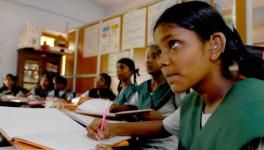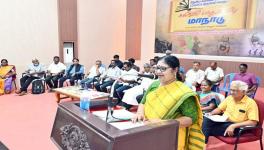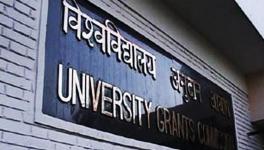Fiasco of New Education Policy
A policy is a response to existing problems in a system, an attempt to mitigate incongruities in it. It diagnoses problems, locates reasons for them and provides solutions for them. Learning is the ultimate objective for any education policy. Following the framework it sets, a number of actors—including learners, teachers, institution managements, the judiciary, bureaucracy, politics, private sector, civil society, international organisations—coalesce to ensure that schools and universities impart learning. The New Education Policy 2020 (NEP) also starts off with the credo that “the entire education system [has] to be reconfigured to support and foster learning”.
The problem:
Learning has myriad meanings and conceptions. Associated with the idea of learning are questions such as: what is being learned? Why? What is the method of teaching-learning? Is the process reproducing social inequalities in classrooms or dismantling them? Are there measurable outcomes from this learning? Is the pedagogy dialectical? Is the educational process equitable?
However, the notion of learning dominant in the NEP has to do with only one question: are children acquiring basic literacy and numeracy skills? In other words, the central problem apropos of school education that the NEP identifies is the “learning crisis”. It incessantly emphasises on improving learning outcomes. For instance: “The gap between the current state of learning outcomes and what is required must be bridged… from early childhood care and education through higher education.” It laments the fall in students’ standards of learning, which it presents as a predominant shortcoming of the education system. “We are currently in a learning crisis: a large proportion of students currently in elementary school—estimated to be over 5 crore in number—have not attained foundational literacy and numeracy…,” it says.
Creation of the problem
The language of markets—efficiency, accountability, competition, monitoring, outcomes, etc—entered the schooling ecosystem in India after neo-liberal reforms, when state expenditure on public welfare was slashed. In 2005 the Annual Status of Education Reports (ASER) started being published, highlighting the poor literacy and numeracy skills of students, particularly in government schools. This fostered the view that there is a nationwide crisis of learning in schools. Furthermore, the Programme for International Student Assessment (PISA), initiated by OECD in 2000 and conducted every three years, played a significant role in creating learning crises globally. India participated in the test in 2009 and stood 72nd among 74 participating countries, boosting the view that a crisis of learning afflicts schools.
In 2014, prominent academics across the globe wrote a letter to the OECD’s PISA director, asking that PISA be stopped over concerns that it was emphasising a “narrow range of measurable aspects of education” and therefore taking attention away from the “less measurable or immeasurable educational objectives…” The academics said this was “dangerously narrowing our collective imagination regarding what education is and ought to be about”. The letter pointed to the alliance of OECD with private companies, “which stand to gain financially from any deficits—real or perceived—unearthed by Pisa”. It also mentioned the fact that governments the world over are overhauling policies and systems in to climb the PISA rankings. This certainly appears to be the case with NEP, now that India is all set to participate in PISA next year.
The diagnosis:
It is true that students’ learning outcomes in India are dismal. But to frame this problem as a “learning crisis” is perhaps not appropriate. Prof Krishna Kumar, a former director of the NCERT, academician and writer, has argued that India’s problem with public schools could just as well be framed as a “teaching crisis”. The reason is the over 10 lakh teacher posts vacant in government elementary schools.
This gulf is being bridged by para-teachers—teachers hired on contracts and working in precarious conditions. Taking the pupil-teacher ratio (PTR) to be 30:1, we have 30 million students in government elementary schools who do not have a teacher. By not taking cognizance of this lacuna, the NEP fails in its diagnosis of what ails schools. True, the dichotomous framework of viewing the problem as a “learning crisis” and “teaching crisis” is also naïve, for the problem is multifaceted and multi-layered.
The NEP presupposes that the so-called learning crisis is caused by ineffective teachers. For example, at one place it says, “The primary goal of overhauling the service environment and culture of schools will be to maximise the ability of teachers to do their jobs effectively… to ensure that our children are learning.” Then it explicitly states that recognition to teachers will be given based on the learning outcomes of their students. It stresses on Continuous Professional Development (CPD) of teachers and school principals/school complex leaders through leadership/management workshops among other activities.
The CPD program must be viewed in light of what has happened over the last two decades. A complex web of NGOs has cropped up, and they are carrying out similar programs to enhance the leadership/ management skills of school principals and teachers. This is because the responsibility of the crisis has been put on teachers. ASER data accentuating poor academic performance of students has often been linked to truancy and non-performance among government school teachers. But making teachers scapegoats has not made the crisis recede, for no amount of capacity building and honing of teachers’ skills can change the larger picture—the million vacant teacher positions will have to be filled, and urgently.
The NEP says that teacher vacancies will be filled “at the earliest, in a time-bound manner—especially in disadvantaged areas and areas with large pupil-to-teacher ratios or high rates of illiteracy. Special attention will be given to employing local teachers or those with familiarity with local languages”. This is highly problematic, since the “local teacher” here seems to be a euphemism for para-teacher. It is all the more alarming because the final policy document does away with the promise to abolish the practice of appointing para-teachers which was made in the draft NEP of 2019.
The solution:
The NEP 2020 promotes an “outcome-oriented approach” as a solution to the learning crisis. The approach is also visible in the new [5+3+3+4] curriculum and pedagogical structure, which puts preschool years together with grades 1-2 under the Foundational Stage, thereby reducing Early Childhood Care and Education (ECCE) to school-readiness. This contradicts the National Curriculum Framework (NCF) 2005, which said that “the ‘future’ of the child has taken centre stage to the near exclusion of the child’s ‘present’, which is detrimental to the well-being of the child as well as the society and the nation”. The new structure is also antithetical to the comprehensive approach recommended by the National ECCE Curriculum Framework, 2013.
On top of that, as opposed to hints in earlier drafts, there is no mention of extension of the Right to Education (RTE) Act in the final policy document. This means that the state does not bear any responsibility of ensuring the education of children in the age group of 3-6 (and 15-18) years. Naturally, private service providers would grow in this land made fertile by the policy. This concern is exacerbated by the policy’s disconcerting silence on the regulation of burgeoning pre-primary private schools in the nation.
The privatisation of schooling is another key solution that the NEP proposes. In fact the 65-page document comes across as an evangelist for privatisation, although the text repeatedly conceals the word “private” under the guise of two expressions—“public-spirited private” and “philanthropic private”. While the first expression is conspicuously paradoxical, the second can be read as the espousal of “new philanthropy” or “philanthrocapitalism”. As the historian Mikkel Thorup has explained, philanthrocapitalism rests on the claim that there is no conflict between the market and the common good. Therefore, the market should be extended to the services that were earlier provided by the state. The NEP, on page 61, directly “calls for the rejuvenation, active promotion, and support for private philanthropic activity in the education sector”. It unequivocally specifies on page 31 that the “private/philanthropic school sector must also be encouraged and enabled to play a significant and beneficial role”.
Two decades earlier, under the Atal Bihari Vajpayee-led NDA government, India’s leading tycoons—Mukesh Ambani and Kumar Mangalam Birla—wrote the report, “Policy Framework for Reform in Education,’ which recommended making education market-oriented. The NEP loudly echoes that report’s recommendation. The backdrop of the latest policy illuminates this more clearly. On 24 June, the Human Resource (now Education) Ministry signed an agreement with the World Bank, inviting it to intervene in school education through its Strengthening Teaching-Learning and Results for States (STARS) program. The program envisions a greater role for non-state private actors in education, which is unsurprising considering the World Bank’s earlier interventions, in particular the District Primary Education Program (DPEP), which undermined India’s state-funded primary education.
But let us assume for a moment that our sole motive is to improve the learning outcomes for students and climb PISA rankings. One of the top-performing nations in PISA is Finland, whose education system is widely regarded as the world’s best. Ironically, some of the salient features of Finnish education system are: no standardisation of teaching and learning, minimum level of competition between schools and, no national testing and examination systems to monitor student or teacher performance.
Pasi Sahlberg, a prominent Finnish educator and scholar, has said that the reason the Finnish education system succeeds is that Finland resists several aspects of market-based education policies. Notwithstanding the numerous disparities between India and Finland, there is a lesson here, which is that education should not be commodified, schools must be insulated from markets. The question is, are we open enough to learn this lesson?
The author is a post-graduate in education from Ambedkar University Delhi, and is a researcher in education policy. The views are personal.
Get the latest reports & analysis with people's perspective on Protests, movements & deep analytical videos, discussions of the current affairs in your Telegram app. Subscribe to NewsClick's Telegram channel & get Real-Time updates on stories, as they get published on our website.
























